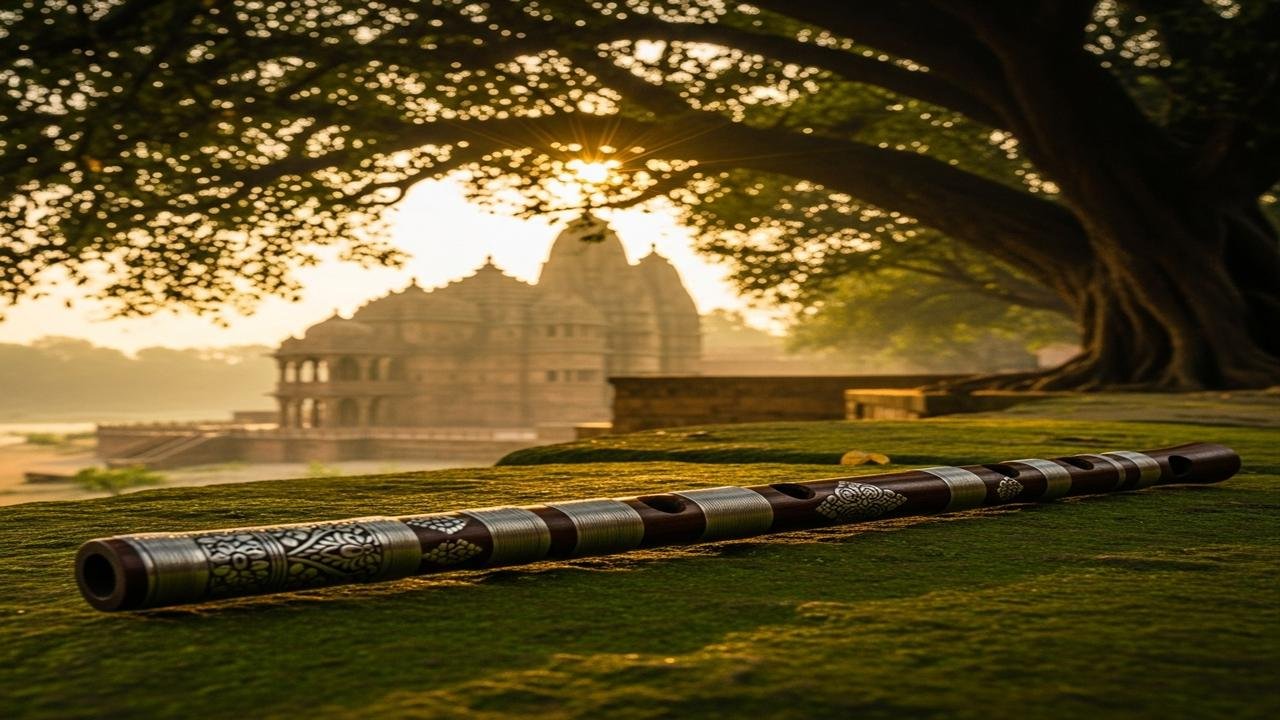The Secret of Krishna Flute That Mesmerizes Vrindavan

The Mystery of Lord Krishna’s Flute
In the cool dusk of Vrindavan, a single tune rises and the world pauses. The cows stop grazing, the river seems to listen, and hearts begin to remember a home they never left.
That melody belongs to Krishna’s flute — simple, hollow, and yet full of meaning. It is not just an instrument. In stories told by grandmothers, sung in bhajans, and carved on temple walls, the flute is a bridge between the human heart and the divine. Its sound is called a summons and a promise. It calls the soul to wake up and to come play.
Long ago, in the green groves where Krishna tended cows, his flute spoke of love in ways words never could. The gopis heard it and left everything to follow that sound. Radha heard it and found herself at the center of an ancient dance of devotion. These tales are not only romance; they teach how devotion transforms ordinary life into something sacred.
There is a deep symbolism in the flute’s simplicity. A bamboo tube, empty inside, becomes a vessel for breath and song. This emptiness is not void but readiness — a reminder that to receive divine grace, one must become humble and open. The sound itself is considered nāda, the cosmic vibration. When Krishna plays, the music is said to touch the silent place inside us where longing and peace meet.
Historically, flutes have been part of Indian culture long before temple sculptures made them famous. The bansuri, a side-blown bamboo flute, is common in villages, played by shepherds and farmers. That everyday instrument became divine when associated with Krishna. Craftsmen make the bansuri without keys, relying on precise holes and breath. This plain-making mirrors a spiritual truth: the divine needs no ornament, only a willing heart.
How does this ancient symbol live in our modern world? In many ways. Temples fashion Krishna idols with a flute resting gently at his lips. During Janmashtami and Holi, songs of Krishna and flute music fill streets and homes. In bhajans and kirtans, musicians try to recreate that tender call, inviting listeners to participate rather than merely observe.
The spiritual lessons are simple and practical. First, listen more than speak. The flute teaches attentive silence — the kind that hears the quiet voice within. Second, live simply. Like the bamboo, find contentment in little things. Third, share joy. Krishna’s music never stays private; it draws people into dance and community.
There are also modern uses that extend the flute’s gentle power. Many yoga and meditation classes use flute music to create calm and focus. Music therapists find that flute tones soothe anxiety and open memory. Artisans who craft flutes are keeping a living tradition, teaching new generations how breath can turn wood into song.
For devotees, the flute is also a sacred object in ritual. During aarti or puja, people may offer flowers or sing as the image of Krishna lifts his flute. In homes, a small flute placed on an altar can remind families to meet each morning with gratitude and a few minutes of quiet listening.
Ultimately, the mystery of Krishna’s flute is not a puzzle to be solved but a call to be felt. It asks us to soften, to follow a sound deeper than thought, and to trust that longing leads us home.
Conclusion
Next time you hear a flute or even a simple melody, pause. Let it reach the quiet within. In that stillness, you might hear your own name being called — an invitation to love more freely, live more simply, and return to the heart.
